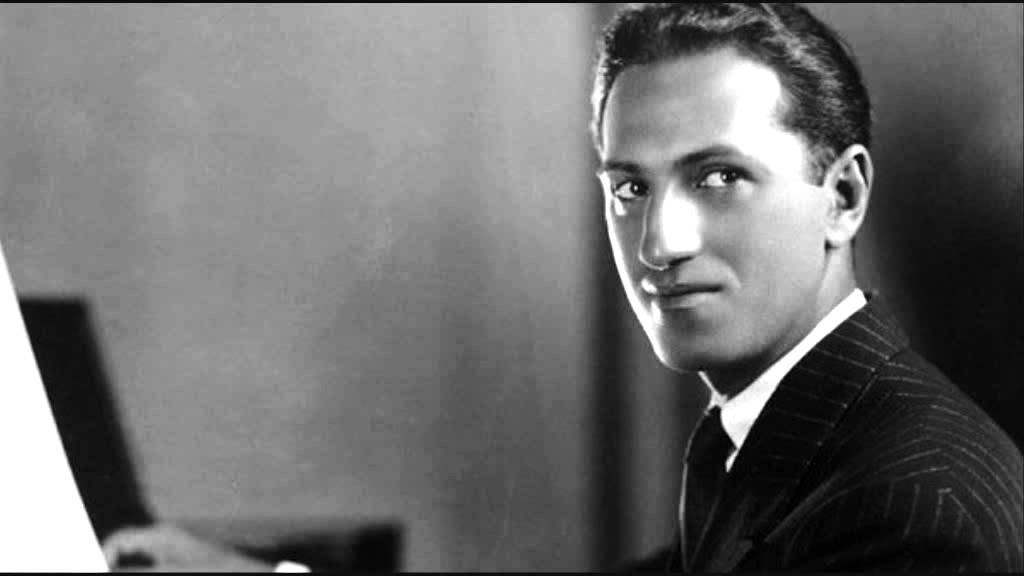George Gershwin – A Complete Biography
Introduction
George Gershwin (born Jacob Gershwine; September 26, 1898 – July 11, 1937) was an American composer and pianist whose innovative blending of classical music with jazz and popular styles made him one of the most influential figures in American music. His works ranged from popular songs and Broadway musicals to orchestral compositions and opera. Gershwin’s music reflected the vibrant and evolving soundscape of early 20th-century America, capturing both the sophistication of concert music and the rhythmic pulse of jazz.

Childhood
George Gershwin was born in Brooklyn, New York, to Rose and Morris Gershwine, Russian-Jewish immigrants who had settled in the United States. He was the second of four children in a family that valued cultural expression, though they had no formal musical background. From an early age, George showed an affinity for music, often fascinated by street performers, mechanical pianos, and popular tunes.
Although he was not an enthusiastic student in school, his interest in music grew rapidly. At the age of 11, he began teaching himself to play the piano after hearing a classmate perform. Recognizing his talent, his parents eventually bought him a piano, and George began formal lessons soon after. His teachers noted his remarkable ear, memory, and improvisational abilities.
Youth
By his teenage years, Gershwin was deeply immersed in the music scene. He left high school at the age of 15 to work as a “song plugger” in New York’s Tin Pan Alley—a bustling hub of popular music publishing. His job involved playing and promoting songs to performers and producers, which gave him valuable insight into the commercial music industry.
During this time, Gershwin also began composing his own music. His first published song appeared when he was just 17, and not long after, he achieved a major breakthrough with the song “Swanee.” Performed by Al Jolson, the piece became a national hit and brought Gershwin widespread attention.
Adulthood
As Gershwin’s reputation grew, so did his ambitions. In the 1920s, he began collaborating with his older brother, Ira Gershwin, a lyricist whose witty and expressive lyrics perfectly complemented George’s music. Together, they created numerous successful Broadway shows and popular songs that defined the era.
In 1924, Gershwin composed “Rhapsody in Blue,” a groundbreaking piece that combined classical structure with jazz rhythms and harmonies. Its premiere was a sensation and marked his emergence as a serious composer. He continued to explore the intersection of classical and popular music with works like “Concerto in F” and “An American in Paris.”
Throughout the 1930s, Gershwin expanded his artistic range. He traveled to Europe, met with prominent composers, and continued writing for Broadway and Hollywood. Despite his growing fame, he remained committed to exploring new styles and musical languages, always pushing boundaries.
Major Compositions
Gershwin’s musical output was both prolific and diverse. Among his most famous works are:
- Rhapsody in Blue (1924): A symphonic jazz composition for piano and orchestra, considered a landmark in American music.
- Concerto in F (1925): A full-scale piano concerto that blended classical form with American jazz idioms.
- An American in Paris (1928): A tone poem capturing the energy and atmosphere of Paris through jazz-inspired orchestration.
- Porgy and Bess (1935): An opera set in the African American community of Catfish Row, featuring songs like “Summertime” and “It Ain’t Necessarily So.” Though initially controversial, it later gained recognition as a masterpiece of American opera.
- Numerous popular songs: “I Got Rhythm,” “Embraceable You,” “They Can’t Take That Away from Me,” and “Someone to Watch Over Me” are just a few examples of the many beloved songs he wrote with Ira.
His music often featured syncopated rhythms, bluesy melodies, and complex harmonies, capturing both the elegance and grit of American life.
Death
In 1937, while working in Hollywood on film scores, Gershwin began experiencing troubling health symptoms, including dizziness and blackouts. Doctors eventually discovered he had a brain tumor. Despite emergency surgery, Gershwin died on July 11, 1937, at the age of just 38.
His death shocked the music world, cutting short a career that had already reshaped American music and hinted at even greater achievements to come. Thousands mourned his passing, and memorial concerts were held across the country in his honor.
Conclusion
George Gershwin was a musical innovator who left an indelible mark on the world. By fusing the worlds of classical music, jazz, and popular song, he created a unique American sound that continues to influence musicians and composers today. His ability to write both catchy melodies and sophisticated orchestral works made him a rare talent. Despite his untimely death, Gershwin’s legacy lives on through his timeless compositions, which remain central to the American cultural identity.

Comments are closed